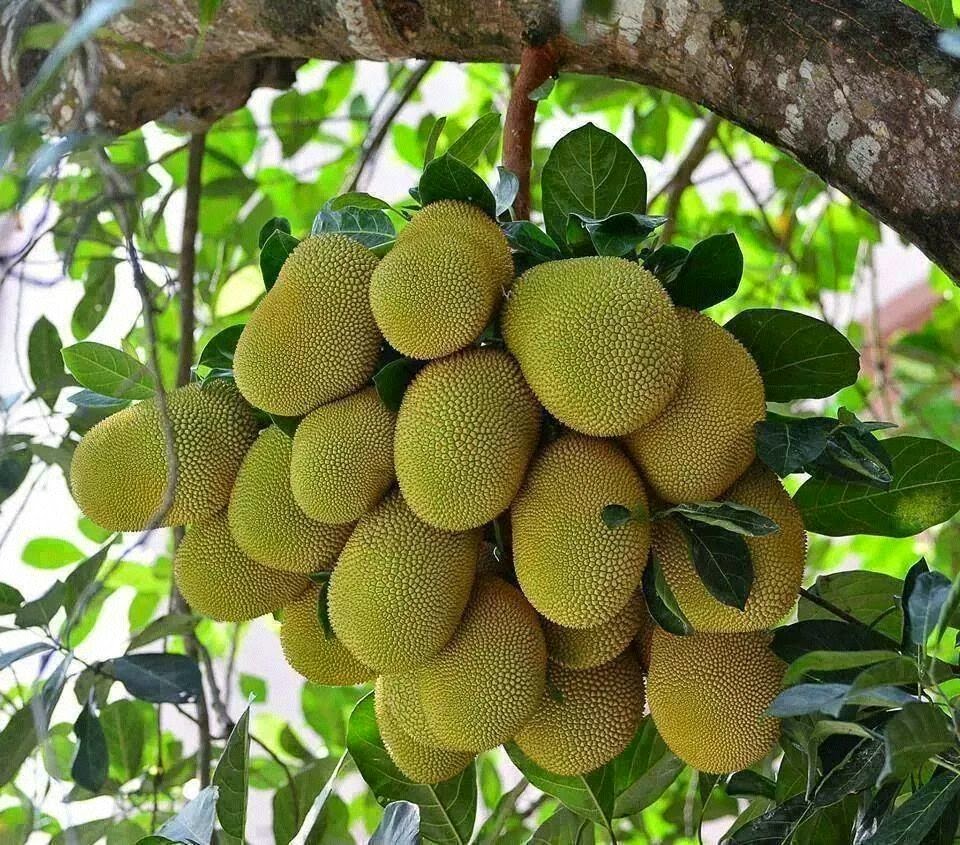
They are gummy and thick and are divided into a petiole and a leaf blade. The leaves are alternate and spirally arranged. In the event of injury to the bark, a milky juice is released. The bark of the jackfruit tree is reddish-brown and smooth. It easily reaches heights of 10 to 20 m (33 to 66 feet) and trunk diameters of 30 to 80 cm (12 to 31 inches). It is the national fruit of Bangladesh and the state fruit of Kerala.Īrtocarpus heterophyllus grows as an evergreen tree that has a relatively short trunk with a dense treetop. The fruit was later introduced to Guam via Filipino settlers when both were part of the Spanish Empire. It was probably first domesticated by Austronesians in Java or the Malay Peninsula. The jackfruit was domesticated independently in South Asia and Southeast Asia, as indicated by the Southeast Asian names which are not derived from the Sanskrit roots.

Centuries later, botanist Ralph Randles Stewart suggested it was named after William Jack (1795–1822), a Scottish botanist who worked for the East India Company in Bengal, Sumatra, and Malaya. The common English name "jackfruit" was used by physician and naturalist Garcia de Orta in his 1563 book Colóquios dos simples e drogas da India. This term is in turn derived from the Proto-Dravidian root kā(y) ("fruit, vegetable"). 1321–1330) Mirabilia descripta: the wonders of the East. Henry Yule translated the book in Jordanus Catalani's ( fl. Later the Malayalam name ചക്ക ( cakka) was recorded by Hendrik van Rheede (1678–1703) in the Hortus Malabaricus, vol.

The word jackfruit comes from Portuguese jaca, which in turn is derived from the Malayalam language term chakka (Malayalam: chakka pazham), when the Portuguese arrived in India at Kozhikode ( Calicut) on the Malabar Coast ( Kerala) in 1499. Jackfruit tree illustrated from one of the earliest natural history books about China by Jesuit Missionary author Michael Boym in 1656. It is available internationally canned or frozen and in chilled meals as are various products derived from the fruit such as noodles and chips. Both ripe and unripe fruits are consumed. Jackfruit is commonly used in South and Southeast Asian cuisines. Canned green jackfruit has a mild taste and meat-like texture that lends itself to being called a "vegetable meat". The ripe fruit is sweet (depending on variety) and is more often used for desserts. The jackfruit is a multiple fruit composed of hundreds to thousands of individual flowers, and the fleshy petals of the unripe fruit are eaten. A mature jack tree produces some 200 fruits per year, with older trees bearing up to 500 fruits in a year. It bears the largest fruit of all trees, reaching as much as 55 kg (120 pounds) in weight, 90 cm (35 inches) in length, and 50 cm (20 inches) in diameter. The jack tree is well-suited to tropical lowlands, and is widely cultivated throughout tropical regions of the world.

Its origin is in the region between the Western Ghats of southern India, all of Bangladesh, Sri Lanka and the rainforests of the Philippines, Indonesia, and Malaysia. The jackfruit ( Artocarpus heterophyllus), also known as jack tree, is a species of tree in the fig, mulberry, and breadfruit family ( Moraceae).


 0 kommentar(er)
0 kommentar(er)
